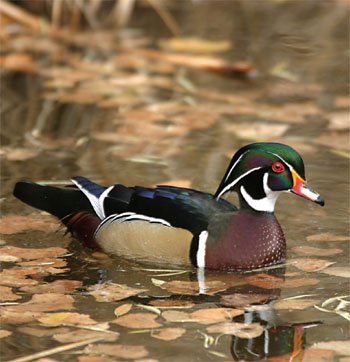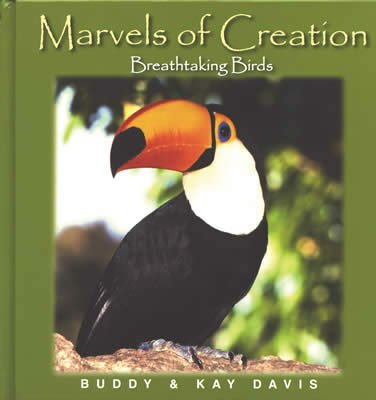Wood Duck
Photo by Lindz Marsh on Unsplash
One of the most beautiful ducks in the world is the wood duck.

One of the most beautiful ducks in the world is the wood duck. The magnificent plumage of the male includes a back covered with metallic, iridescent blues and greens, a reddish-brown breast with white spots, and a beautiful, dark green-blue crest outlined in white on the head. The eye of the male is bright red and the beak is brightly colored as well with black, whitish-cream, red, and yellow. The female has a gray back with blue on her wings, and brown eyes. The belly of the wood duck is white and its webbed feet are yellow, marked with a few dark stripes. To see the detailed beauty of this bird demands praise to the almighty artist who created it.
Freshwater birds, wood ducks inhabit wooded areas, living by the ponds, lakes, rivers, and streams of the United States and parts of Canada. Some will stay in their northern range for the winter season, but others will migrate a relatively short distance in small flocks.
In flight, the wood duck can be identified by the rapid beating of its wings and the whistling sounds it makes. They are adroit flyers and can dart between tree branches even at dusk.
Wood ducks feed on a varied diet including floating plants, seeds, and bulbs, along with wild celery, wild rice, docks, and grasses. Insects such as dragonflies and beetles, snails, amphibians, minnows, and even acorns that have fallen to the ground, are also ingested by this bird.
Wood ducks prefer to nest in a hollow tree crevice, possibly the abandoned nest of a squirrel or woodpecker. The nest can be between 5 and 50 feet (1.83 and 15.24 m) above the ground, usually near water, but if it has to, the bird will move inland to find a place to nest. Squeezing inside a very small hole to nest is no problem for the hen, which lays a clutch of 6 to 15 eggs, hatching in approximately 29 days. The male stays near the nesting site during the incubation period, but after hatching, it is the mother that calls the ducklings to her on the ground. The hatchlings must leap from the nest, which may be very high. Both parents will then hurriedly lead the young to the safety of the water.
At one time, the wood duck was the most abundant duck in the United States. However, early in the 20th century, fears of its soon extinction mounted as its numbers depleted. Through years of proper wildlife management, the wood duck has made a remarkable recovery. Raccoons, snakes, minks, otters, and in the south, alligators, are all natural threats to the wood duck.
Wood Duck
Weight: 12 pounds (685.7 g)
Length: 182 inches (47 cm)
Life Span: 4 to 8 years
Special Design Feature: Baby wood ducks leap
from their nest to the ground (which can be
50 feet (15.24 m) above the ground) right after
they are born.
Did You Know? The wood duck is one of the
most colorful ducks in the world.
Marvels of Creation: Breathtaking Birds
This spectacular book brings the world of feathered creatures alive in a unique and colorful way.
Browse Kids Book- © 2024 Answers in Genesis
- Privacy Policy
- Contact
- About

